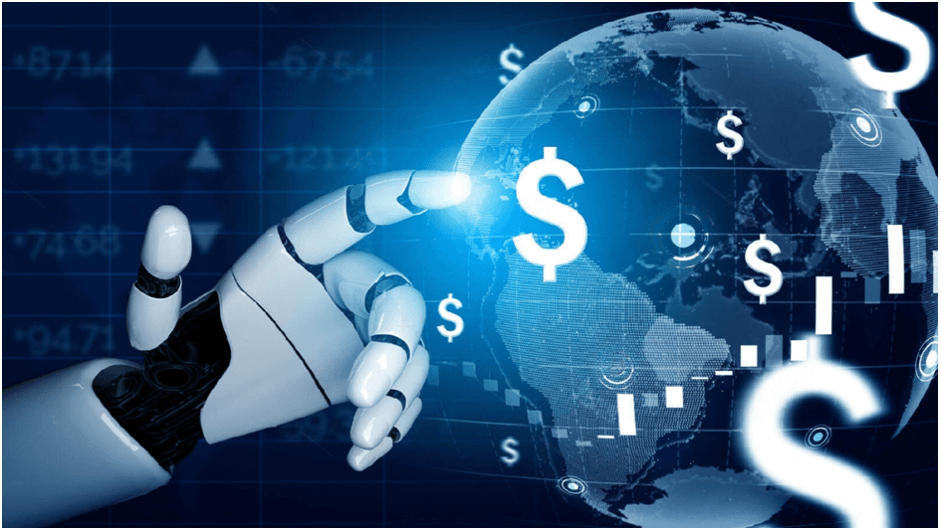What is Automated Trading?
Table of Contents
Automated trading is a strategy for engaging in financial markets through a program that follows pre-established rules for executing trades. As a trader, you must conduct an in-depth technical analysis and specify parameters for your positions, including opening orders, trailing stops, and guaranteed stops.
Auto trading allows you to conduct numerous trades quickly, eliminating the emotional component of your trading decisions since all trade rules are already incorporated into your established parameters. Some algorithms even enable you to utilise predetermined strategies to monitor trends and trade accordingly.
What Are the Benefits of Automated Forex Trading?
With automated trading getting so popular, you must be wondering what makes it so popular. We’ll dive into the benefits of automated trading to give you a better perspective on whether or not to use it.
Automated trading has serval practical benefits, which makes it an attractive choice over self-managed strategies. The ability to delegate market monitoring to a trading bot frees up valuable time for refining a strategy, and trading across multiple platforms helps manage risk. In general, the benefits of automated trading can be summarised as “fast” and “logical.”
Be More Disciplined While Trading
One significant advantage of automated trading is improved trading discipline. As you know, forex is a volatile market, which can do wonders but also wreak havoc on a trading strategy if emotion takes over, leading to impulsive trading and abandoned plans. Automated trading eliminates this risk by following pre-established rules and executing trades without human intervention, preventing deviation from carefully planned strategies.
Get Refined Trading Strategies
Manual trading requires putting your money on the market and tracking your progress over time to identify patterns in your wins and losses. It is an expensive and time-consuming learning process that demands you to consciously sit out opportunities or hold tight during downturns, which can be emotionally draining.
On the contrary, automated trading allows you to assess the performance of your trading rules against historical data. Backtesting provides a risk-free opportunity to refine the rules you apply to your trades and makes it easier to assess what is working in your strategy and what is not. Without the interference of one-off trades, you can access historical data of not just the past few months but years, which provides you with clear and actionable information without risk.
Reduce The Risk
If you have studied forex trading or traded in the market, you must be aware of its risks. Fortunately, those risks get reduced when you start automating your trades. In auto trading, you will use multiple trading robots on different accounts or platforms, allowing for simultaneous trading across asset classes and the distribution of risk. Additionally, automated trading offers faster order execution than manual trading, allowing for immediate reaction to market conditions and seamless execution of trades.
Faster Execution Of Trades
In forex trading, time is of the essence, and novice traders quickly learn the importance of acting quickly. In fact, the saying “time is money” couldn’t be more applicable. Even a difference of milliseconds can significantly impact the outcome of a trade.
Automated trading systems are designed to respond immediately to market conditions, executing orders as soon as your predetermined criteria are met. This contrasts with human traders, who must first recognise the conditions, process the information, and then signal their bodies to take action. Trading bots open positions smoothly and generate the necessary orders to safeguard your investment or execute the trade. This entire process is completed in less time than it takes a human trader to blink.
Like every other trading system, automated trading has downsides, some of which are explained below.
Downsides To Automated Trading
If you are still getting familiar with programming, then you may be stuck with to pre-existing algorithms instead of having a customised tool for your trading strategy. On the other hand, if you can create your own automation, you will always bear the risk of over-optimizing, which means creating an algorithm so accurate to the historical data that it would fail in the live market conditions.
Depending solely on computer software to execute trades on your behalf comes with the risk of missing out on profitable opportunities or placing losing orders due to technical difficulties or mechanical breakdowns. Additionally, if your preferred broker cannot offer direct market access or comparable trading conditions, you may need help to leverage the advantages of automation.
How To Automate Forex Trading?
If you’re considering making the switch from manual to automated forex trading, I suggest taking a moment to ask yourself a few important questions first:
l Do I have a solid trading strategy?
Suppose you’re still learning about forex and experimenting with different trading styles to determine what works best for you. In that case, you may require more experience before seeing tangible benefits from automated trading.
l Does automated trading suit my trading style?
Another critical aspect to consider is whether automation complements your trading style. Trading styles that rely heavily on high volumes, for example, ‘scalping’, are best suited to automation. On the other hand, if you’re more of a swing trader, you may need more effort and time to adapt to automation to be worthwhile.
l What’s my personality as a trader?
Self-awareness can be a powerful tool in both life and trading. Consider your personality and tendencies when deciding whether automated trading suits you. If you dislike uncertainty and never feel fully confident in your knowledge, a rules-based, automated forex trading system may be advantageous. However, if you deviate from a plan and excel at synthesising information and strategies on the fly, automation may not be the best fit for you.
l Is coding my cup of tea?
Learning to code is also an important consideration. While beginner-friendly bots and wizard templates can help ease the transition from manual to automated trading, coding knowledge is essential to fully capitalise on the benefits of automation. If your trading strategy relies on techniques such as supply and demand, support and resistance, or candlestick patterns, creating successful automation capable of handling your unique variables will require active participation in the development process.
If you think that automated trading can boost your trading experience or profitability, then you can opt for automated trading by following these steps:
Find the Right Broker – Not all forex brokers offer automated trading, so find the one that does. Make sure to check the regulations of the broker first before starting to trade with them.
Research Your Trading Platform – If you wish to use automated trading as a hedge, then make sure that your preferred platform allows you to trade from multiple accounts. If the platform you currently use to create automation is temporary, and you plan to switch to another platform in the future, then remember that transferring automation from one platform to another might not be possible due to differences in the programming language.
Begin With No-code Solutions – Before going deep into the complexities of automated trading, try to work with simple automation using a no-code solution like MetaTrader 5 Wizard. You can input the trading rules and backtest to get the hang of the automated trading.
Wrapping Up
The advent of automated trading has transformed day trading for individual investors, allowing them to employ machine learning technology and contend with sizable institutional investors in taking advantage of market fluctuations.
Nonetheless, before implementing an “algorithmic trading strategy,” evaluating whether this approach to forex trading is compatible with your current trading style, financial situation, and even personal characteristics is essential.
How was your experience with automated trading, and what challenges did you come across, do let us know in the comments!



